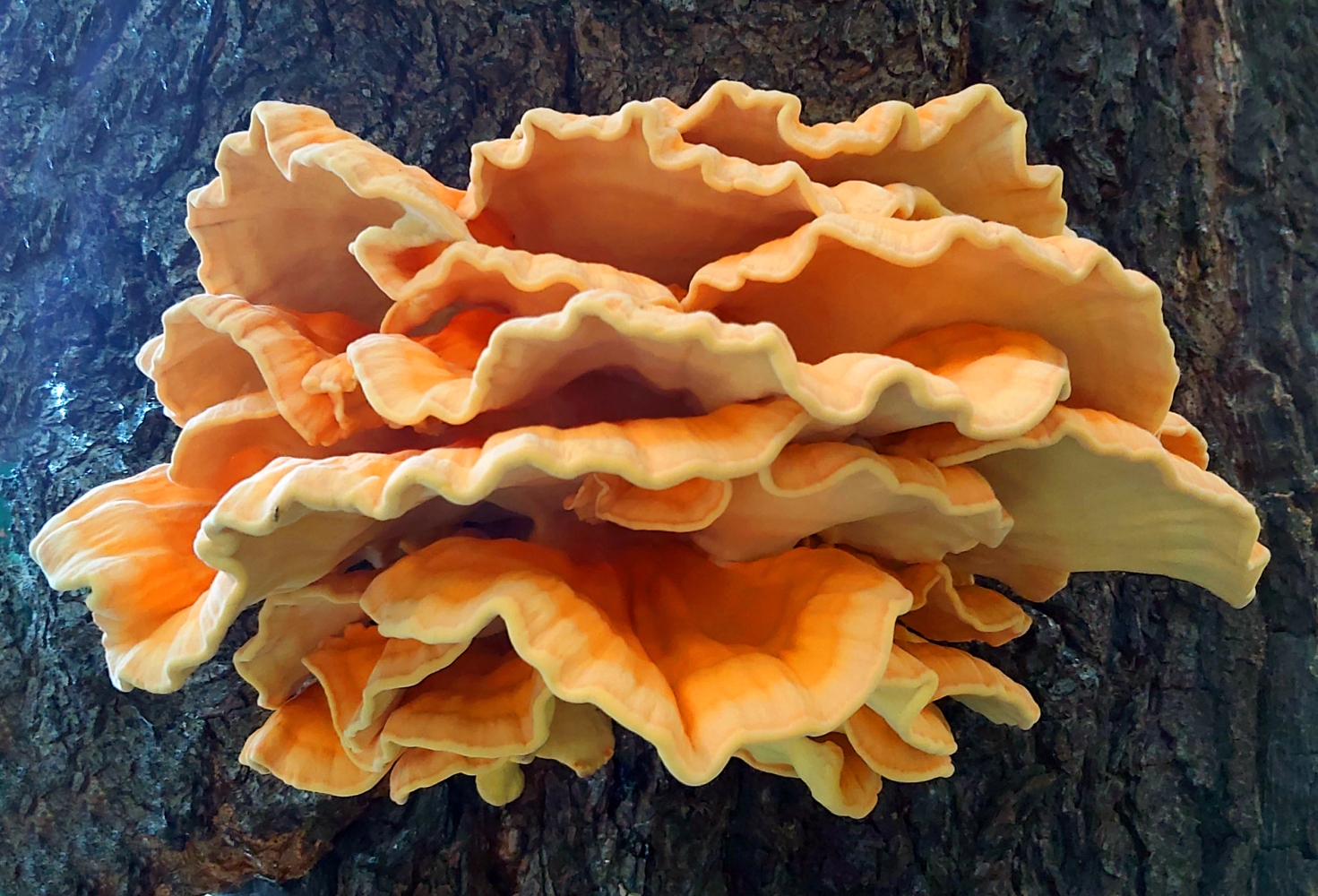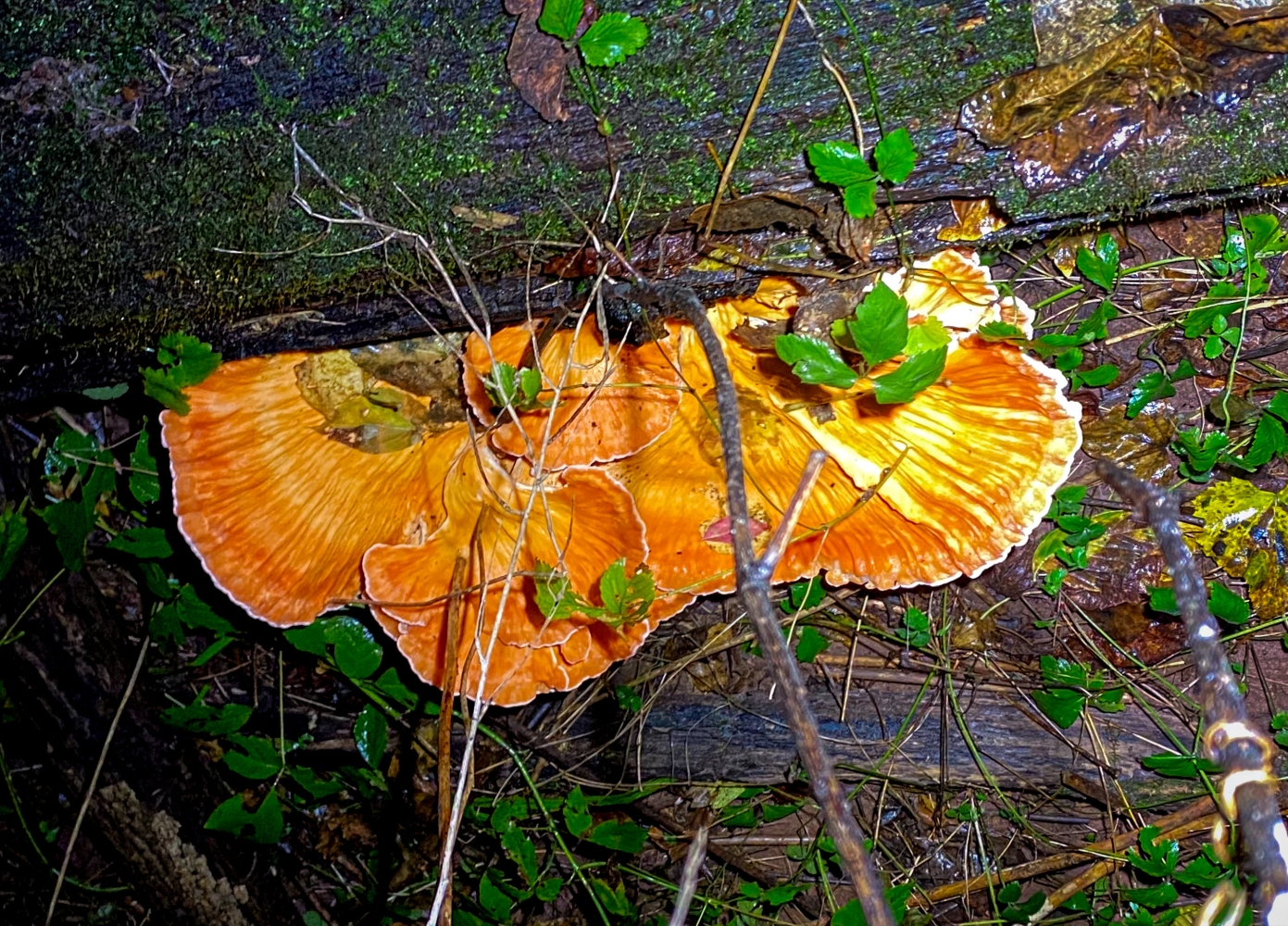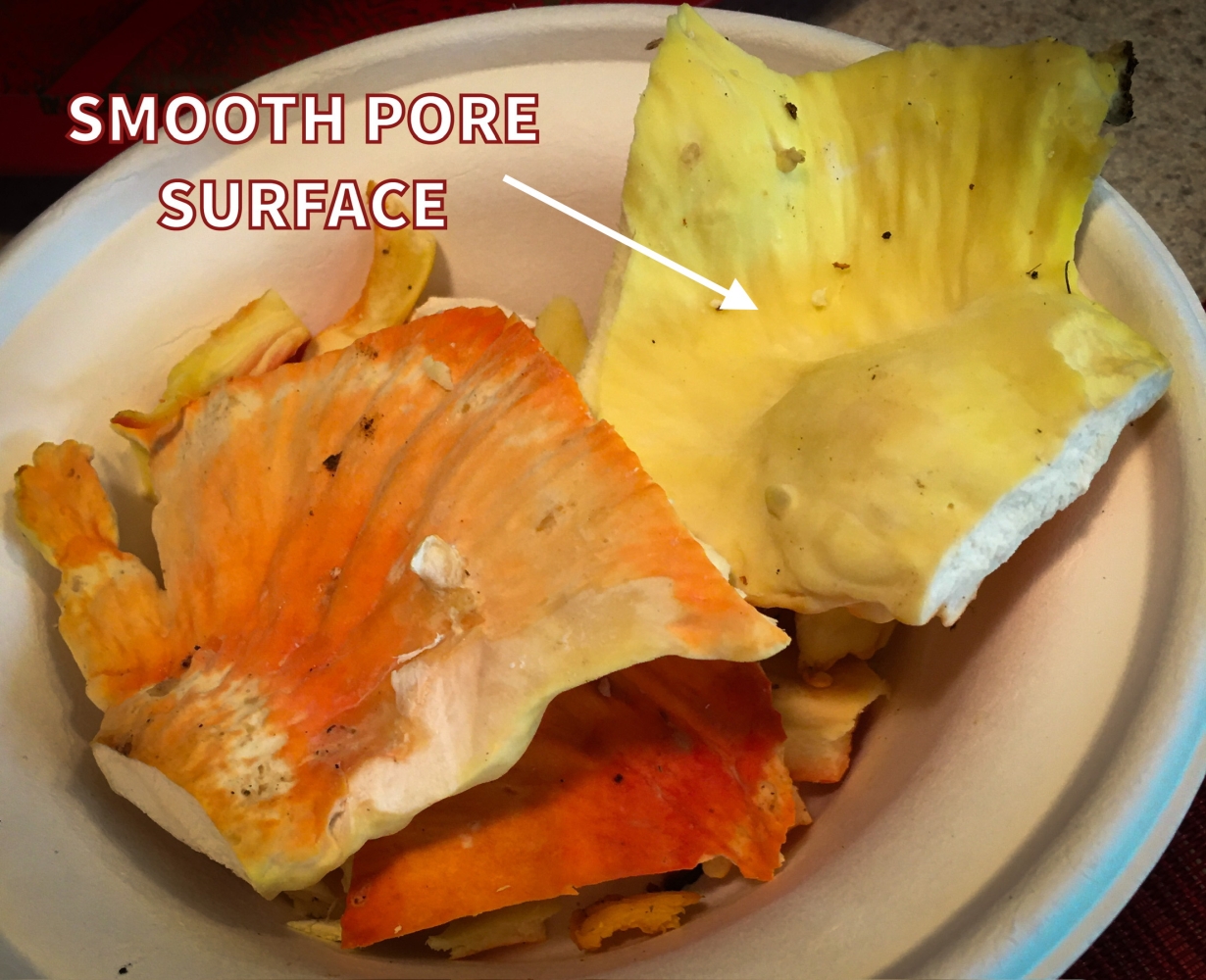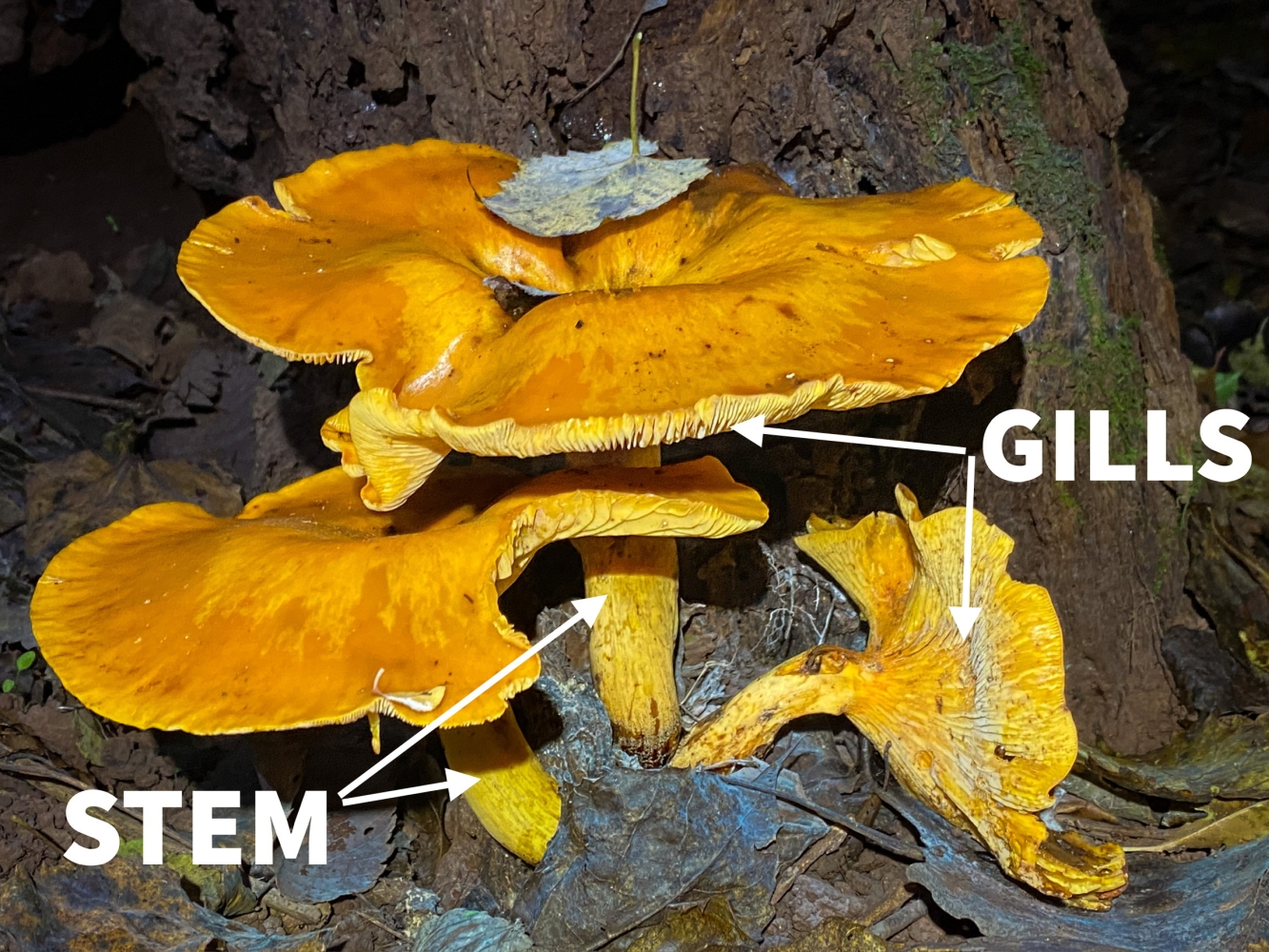
Beginner Friendly Chicken of the Woods

Buddhist Relief is dedicated to eliminating hunger, not only through supplying food donations, but through providing educational opportunities for those interested in learning to grow and forage their own food.
With the summer season upon us in Maryland, you may see flashes of bright orange in wooded areas or even on trees in lawns. You just may have spotted the “60 mile an hour fungus,” known as chicken of the woods.
Chicken of the woods belongs to the laetiporus genus of fungi characterized by their distinctly orange caps which grow on dead and decaying wood. Typically, this generous mushroom grows in shelf-like clusters, or it can also appear as a basal rosette growing at the base of a stump or from buried wood under the ground.

If you are fortunate enough to spot it, this mushroom is considered a “choice edible.” It gets its common name from the fact that it does indeed taste like chicken! It can be prepared any way you would cook chicken and provides a texture that makes it a wonderful substitute for meat in any dish. Chicken of the woods, like all wild mushrooms, should be cooked before eating.
Not only does it taste like chicken, but these mushrooms provide real nutrition:
Chicken of the Woods Calories and Nutrition Facts – Per 100 g (1.5 Cups)
Calories: 360
Carbohydrates: 71 g
Dietary Fiber: 6 g
Protein: 21 g
Fat: 2 g
Potassium: 150 mg
Vitamin C: 10% of RDA
Vitamin A: 5% of RDA
When this mushroom flushes, it can produce 10-20 lbs of a delicious, natural meat substitute packed with healthy compounds to boost immune systems as well as an excellent non-animal source of protein. Mushrroms “flush” similar to when a flower blossoms. The mycelium are the actual living organism, like the tree, and a flush is like the “fruiting body” of the mushroom. So when we say mushrooms “flush” that means the mycelium sends up their reproductive fruiting body. That’s the part we generally see. However, unlike the fruit on a tree, mushrooms can appear very quickly — like overnight sometimes — and can disappear just as quickly. They are ephemeral.

Before you go out and try to score yourself this wild treat, here are some things to know:
Chicken of the woods mushrooms will have caps in shades of orange. Some are very bright as pictured, but they can also be paler, more peach colored. They grow on hardwood and conifer trees, depending on the species. The underside will consist of pores, not the gills most people associate with mushrooms. This is a key identifying characteristic. The pore surface may be yellow, in the case of laeitporus sulfureus, or white, as in the the case of laetiporus cincinnatus, but it will always contain pores. The mushrooms grow directly from the wood and lack the “stem” of more familiar mushrooms. This is another of its key identifying characteristics.

This is considered one of the safest mushrooms for beginning foragers, as there really are no dangerous “look alikes.” One mushroom that can mislead some seeking this natural treat is the “Jack O’lantern mushroom,” Omphalotus illudens. At first glance the Jack O’lantern, with its large, bright orange caps, growing in a tight cluster, could look very much like chicken of the woods. However if you check underneath you will find gills and a stem, both of which distinguish this from the chicken mushroom. While Jack O’lantern mushroom won’t kill you, it can cause severe gastrointestinal distress.

Chicken of the woods has a long season. It can be found late spring through fall. It’s easy to spot when it shows itself, offering not only real nutrition but a delicious flavor. So next time you zip by a wood lot or take a walk in the woods, pay attention to those flashes of orange. You may just find yourself a lovely meal you can share!
(This post is for informational purposes only. Always do your own research before consuming any foraged food. Never eat anything until you are certain you know what you are consuming. There are groups on Facebook that would be happy to assist in guiding you through the identification process. Once you meet this fungus in person, it will be easy to gain confidence in your own identification skills. Any time you try a new food, including the chicken mushroom, be sure to start with small amounts to test how your body responds. As with any other food, some people may have sensitivities to the chicken of the woods mushroom.)



